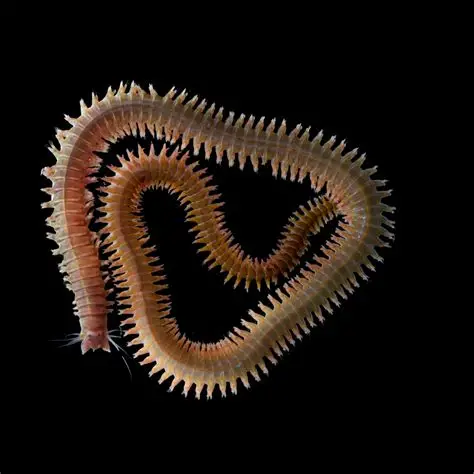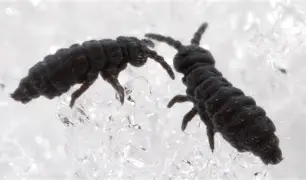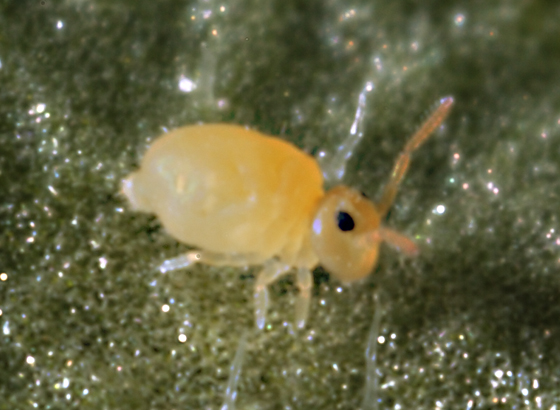Taxonomy Lecture Exam 2
1/206
There's no tags or description
Looks like no tags are added yet.
Name | Mastery | Learn | Test | Matching | Spaced |
|---|
No study sessions yet.
207 Terms
The study of the diversification of living forms, both past and present, and the relationship among living things through time is called?
Systematics.
The branch of biology that deals with the classification of species and higher groups is called?
Taxonomy.
A phylogeny is?
A branching diagram showing hypothesized evolutionary relationships between taxa.
True/False: A specimen’s phenotype is the exact representation of its genotype.
False: Genotype + Environment = Phenotype
The study of the form and anatomical structures of organisms is called?
Morphology.
A shared derived characteristics of a lineage is a:
Synapomorphy.
A group consisting of an ancestral species and some, but NOT all, of its descendents is termed:
Paraphyletic.
The science of defining groups of biological organisms on the basis of shared characteristics and giving names to those groups is called?
Taxonomy.
The modern system of ZOOlogical nomenclature started in:
1758.
True/False: Species are hypotheses of evolutionary distinct lineages.
True. They represent segments of population lineages that maintain their identity from such lineages.
Arthropods are believed to have first evolved when and where?
In marine habitats around approximately 520 mya.
Which of these is NOT a characteristic of all insects?
Wings.
The fusing and modification of segments to form a specialized area of the body is called?
Tagmosis.
Annelids are considered the closest living relatives of arthropods.
True.

The clade Mandibulata includes:
Hexapods, crustaceans, and myriapods.
True/False: Insects are a derived clade within Crustacea.
True. Insects are a part of Pancrustacea.
What group has biramous appendages.
Crustacea. They have a leg and a gill.
Remipedes and cephalocarida are most closely related to what group?
Hexapoda.
According to the international code of Zoological Nomenclature, if multiple names are given to the same species, which one should be used?
The oldest one.
Which of these is not an entognathous order?
Zygentoma.
Which of these orders has males that deposit spermatophores (i.e., no internal fertilization).
Archaeognatha.
True/False: Paleopterous insects have indirect flight muscles.
False. They have direct flight muscles.
Which of these is not a characteristic of exopterygota insects?
Presence of a pupal stage.
The former order isoptera is now considered a part of which order?
Blattodea.
True/False: All holometabolous orders are a part of Endopterygota.
True. Holometabolous is synonymous to Endopterygota.
Which of these orders is NOT holometabolous?
Thysanoptera.
True/False: Insect cuticle is primarily made of keratin.
False. It is primarily made of chitin.
The integumentary system contains which three components?
Cuticle, epidermis, basement membrane.
The endoskeleton of the insect head is called the?
Tentorium.
The outside (visible) part of an insect is primarily part of the?
Integumentary system.
Which section of the insect body contains cerci in many insect orders?
The abdomen.
List two paleopterous insect orders.
Odonata
Ephemeroptera
List two entirely apterous insect orders.
Zygentoma
Archaeognatha
The most distal section of the insect leg is the?
Claw.
Insect legs and wings emerge from the:
Thorax.
True/False: The insect head is though to be the fusion of at least six metameres through the process of tagmosis.
True. An estimate between 1-5 and 1-7.
The first segment of the insect antenna is called the:
Scape.
The ventral section of the second thoracic segment of an insect is called the:
Mesosternite.
The basal section of the insect leg is called the:
Coxa.
True/False: WIngs evolved at least twice in Insects.
False. Insect wings evolved ONCE.
True/False: Insect antenna are made up of only cuticle and dead epidermal cells.
False: They are very much alive.
Which species concept is based on the ability of individuals to interbreed?
Biological species concept.
Which Hexapod order is partially defined by the presence of a furcula?
Collembola.
Toxognaths in Chilopoda are the:
Venomous first pair of legs.
True/False: Entognathous hexapods form a monophyletic group.
False.
Homologous morphological structures are:
Structures that are derived from a common ancestral species.
Which of these orders contain specimens with their mouthparts enclosed in a gnathal pouch?
Diplura.
True/False: The immature stages of paurometabolous insects look similar to adults of the same species.
True. The nymphs look similar to the adults.
Compound eyes are made up of many:
Ommatidium.
True/False: Wings emerge from thoracic tergites, legs from thoracic sternites.
False. They both emerge from the pleural membrane.
Which Entognathous order has no antennae, no eyes, no wings (apterous), and no cerci?
Protura (Coneheads).
Which Entognathous order has eyes AND antenna present, and also possess a furcula and a collophore.
Collembola (Springtails).
Which Entognathous order has NO eyes but possess long antennae, as well as two cerci on their posterior end, which can be pincer-like or thread-like.
Diplura.
Which of the following combinations of characteristics uniquely diagnoses the order Protura within the class Entognatha?
Absence of antennae, absence of eyes, and absence of cerci.
A researcher identifies a hexapod specimen that is less than 2mm long, exhibits little body pigmentation, and has a distinctive cone-shaped head. Given these findings, which conclusion about its appendages is most appropriate?
It lacks both antennae and cerci (Protura, also known as CONEheads).
The ability of Collembola to "spring/jump into air" is directly linked to which highly derived morphological feature?
The furcula.
Which Paleopterous order is considered the most primitive winged insects, have very short antennae and compound eyes, and possess four triangular membranous wings?
Ephemeroptera (Mayflies)
Which Paleopterous order is characterized by large heads and large, well-developed compound eyes, and very short antennae.
Odonata (Dragonflies and Damselflies)
An insect specimen is collected that is hemimetabolous and possesses fully developed wings, yet exhibits no capability for folding these wings over its back. Further observation shows this individual molts once more before reproduction. This specific sequence of traits (hemimetaboly, non-folding wings, and post-emergent ecdysis) is characteristic of which unique life stage and taxonomic group?
Subimago stage of Ephemeroptera.
In the order Odonata, which set of morphological adaptations is most clearly linked to their function as visual, aerial predators?
Large heads with large, well-developed compound eyes, and four long, rounded wings of approximately equal size.
Which Polyneopterous order is characterized by long antennae and compound eyes, four membranous wings with “braided” venation, and wings that fold over the abdomen when at rest?
Plecoptera (Stoneflies)
Which Polyneopterous order is characterized by long, thread-like antennae, compound eyes, four membranous wings (when wings are present), and with a flattened and oval-shaped body with a head concealed from above by the pronotum?
Blattodea (Cockroaches and Termites)
Which Polyneopterous order is characterized by short, thread-like antennae, large compound eyes, four wings (leathery or membranous) that are folded flat over the abdomen, and forelegs that have been modified to be enlarged and equipped with spines used for grasping prey.
Mantodea (Mantises).
Which Polyneopterous suborder is characterized by long antennae (~half of body length), small compound eyes (when present), lack wings, and the body is elongate, cylindrical. Females have a long, sword-shaped ovipositor.
Grylloblattodea (Ice Crawlers)
Which Polyneopterous suborder is characterized by long, thread-like antennae, compound eyes, no wings, and two very short cerci. These insects are very rare, and only found in South Africa.
Mantophasmatodea (Heel Walkers)
Which Polyneopterous order is characterized by long, thread-like antennae (usually), compound eyes, and are usually wingless, but may have very short wings. These insects are usually long and slender, and they have two short cerci?
Phasmatodea (Walking sticks)
Which Polyneopterous order is characterized by having long antennae, kidney-shaped compound eyes, four membranous wings that fold over the abdomen (males), an enlarged segment on the for-torsi for making silk tunnels, and two short cerci?
Embioptera (Web-spinners)
Which Polyneopterous order is characterized by long, many-segmented, thread-like antennae, four wings with two being toughened and leathery (tegmina), two cerci, and hind legs that are enlarged for jumping.
Orthoptera (Grasshoppers, Katydids, Crickets),
Which Polyneopterous order is characterized by the first set of wings being reduced to short elytra, with the second set of wings membranous, body elongate and flattened, and two forceps-like cerci.
Dermaptera
Which Polyneopterous order is characterized by long antennae (thread- or bead-like), compound eyes are winged individuals, and no eyes on wingless individuals. These insects are small, less than 3mm long, and have two very short cerci.
Zoraptera (Angel Insects)
What specific combination of characteristics accurately excludes Plecoptera from the Paleoptera?
Possessing a wing folding mechanism that secures the wings flat over the abdomen.
A hemimetabolous insect is collected near a flowing stream. It possesses four membranous wings that feature intricate, extensive "braided" venation and are securely folded flat over the abdomen at rest. Based on the wing morphology and resting position, this specimen is definitively placed within which order?
Plecoptera
A newly discovered winged insect shares the Mantodea traits of a long pronotum and four wings folded flat over the abdomen. To definitively place it as Mantodea rather than a similar Polyneopteran such as Blattodea, the researcher should look for:
Specialized raptorial forelegs.
The order Orthoptera is characterized by a specific morphological feature that directly relates to its common name (Grasshoppers, Crickets).
Hind legs that are often enlarged for jumping.
How does the wing configuration of Orthoptera typically differ from that of Blattodea?
Orthoptera generally have four wings where the forewings are tough/leathery and the hindwings are membranous, whereas Blattodea forewings are usually membranous.
An insect specimen is less than 3mm long, features bead-like antennae, and two very short cerci. It is wingless and lacks eyes. Based on the size and eyes, this specimen is best classified as:
Zoraptera.
Which Paraneopterous order is characterized by long thread-like antennae and compound eyes, four membranous wings with minimal venation (when present) which are held rooflike over the body, and no cerci. They are typically tiny, under 5mm long, and can have chewing or sucking mouthparts.
Psocoptera (Booklice and Barklice)
Which Paraneopterous suborder is characterized by short antennae, no wings, and a softened, flattened body. They may have chewing or sucking mouthparts.
Pthiraptera (True Lice)
Which Paraneopterous order is characterized by four wings that are long, narrow, and fringed with hairs. These insects are usually small (usually ½ - 2mm long) and soft bodied. They have sucking, asymmetrical mouthparts.
Thysanoptera (Thrips)
Which Paraneopterous order is characterized by specialized piercing sucking mouthparts? These insects typically have four wings, and in the case of “bugs”, the wings are held flat over the body, and the forewings (FW) are leathery at the base. In other groups, wings are held roof-like, and the FW is either leathery or membranous. They have variable antennae and usually possess compound eyes.
Hemiptera (Bugs, Aphids, Hoppers, Cicadas, Scales)

This Collembola family has an elongate body, with abdominal segments nearly equal in size, with a short or absent Furcula. These Springtails are usually pigmented (gray, yellow, purple, blue, or greenish), they usually have eyes, and many are found on snow (snow fleas).
Hypogastruridae (“lack of a stomach-tail”)
This Collembola family has an elongate body, with the prothorax reduced, and the 4th abdominal segment being at least twice as long dorsally as the 3rd. The furcula of this springtail is well-developed.
Entomobryidae (“segmented insect-like hexapod that lives in moss”).

This Collembola family is globular, resembling a field mouse, with the four first abdominal segments fused and with no visible sutures, and the next two abdominal segments (5-6) forming a small apical “papilla”. The furcula of this springtail is well-developed.
Sminthuridae (“sminthur” = a field mouse)
This Diplura family has both the antennae and cerci multi-segmented, with both being equally long and filamentous. These hexapods are scavengers.
Campodeidae (“resembling a caterpillar”)
This Dipluran family is elongate and whitish, with the end of the abdomen and cerci being darker, and the cerci itself being picher-like and one-segmented. These hexapods are predators.
Japygidae (Forecep-tails)
This Archaeognatha family has a scale-covered cylindrical body, with a humped back and three tails. Styli is evident on some abdominal segments. This Apterous insect has compound eyes that TOUCH at the top of the head (contiguous) and glow when illuminated in the dark.
Machilidae.
Which order of Apterous insects has a mandible with ONLY a single point of articulation with the head?
Archaeognatha (“jumping bristletails”) (Archaeo = old + gnathal = jaw)
This Zygentoma family has a scaled-covered, flattened body, 3 tail filaments, and compound eyes far APART on top of head, with the eyes not touching, or sometimes absent.
Lepismatidae (lepisma = scale).
This Ephemeroptera family is identified by the Medial (MP3-4) vein in the forewing being abruptly bent. These Paleopterous insects are medium- to large-sized, have 2-3 caudal filaments as an adult, and the hind tarsi are 4-segmented.
Ephemeridae (“short-lived”)
This Ephemeroptera family is identified by the Medial (MP3-4) vein in the forewing NOT being abruptly bent. These Paleopterous insects are medium-sized, have 2 caudal filaments as an adult, and the hind tarsi are 5-segmented.
Heptageniidae ("seven-day")
This Ephemeroptera family is identified by the bases of the Cubitus (CuA and CuP) veins touching. These Paleopterous insects are medium-sized and have 3 caudal filaments as an adult.
Ephemerellidae ("short-lived")
This Ephemeroptera family is identified by the bases of the Cubitus (CuA and CuP) veins being SEPERATED. These Paleopterous insects are small to medium-sized and have 3 caudal filaments as an adult.
Leptophlebiidae ("slender-vein") ("prong-gilled")
Which Ephemeroptera family is identified by NO hind wings, being very small-sized, and have a FW with almost no cross-veins.
Caenidae (“new” or “young”, small square-gilled Mayflies)
Which Odonata suborder has wings that are broad at the base, and are held out to the sides at rest?
Anisoptera (“Dragonflies”)
Which Odonata suborder has wings that are stalked or narrow at the base, and are held above the body at rest?
Zygoptera (“Damselflies”)
This Anisoptera family have eyes that do NOT meet above the head (separate), and the terminal segments of the abdomen are often expanded, forming a “clubtail”. The “triangles” in the wings are similar in size and shape, the brace vein is present, and there is no foot in the hindwing. This Dragonfly is usually dark with yellow or green markings.
Gomphidae (“clubbed-tail”)
This Anisoptera family have eyes that do meet above the head, and the “triangles” in the wings are similar in size and shape, with a brace vein present, and NO “foot” in the hind wing. This Dragonfly has an abdomen that is thin throughout the length, and are usually brightly marked with blue or green.
Aeshnidae (aesch = ugly)
This Anisoptera family have eyes that do meet above the head, and the “triangles” in the wings are NOT similar in size and shape, with no brace vein, and the anal loop in the hind wing is “foot-shaped”. This Dragonfly has an abdomen that is usually broader and flattened, and this insect is usually brightly colored, and the wings are often patterned.
Libellulidae (libel = book, ule = little) (“Common Skinners”).
Out of the three Anisoptera families, which of these Dragonflies have “triangles” in the wings that are not similar in size and shape, has no brace vein, and no anal loop in the hind wing that is “foot"-shaped”?
Libellulidae.
This Zygoptera family have wings that are gradually narrowed at the base and are NOT “stalked”, and the wings have 10 or more antenatal crossveins. The wings are entirely black or partially black or clear with a red spot at a base.
Calopterygidae (calo = beautiful, pterygota = wing) (“broad-winged damselflies”)